May 16, 2025 | 03:39 GMT +7
May 16, 2025 | 03:39 GMT +7
Hotline: 0913.378.918
May 16, 2025 | 03:39 GMT +7
Hotline: 0913.378.918
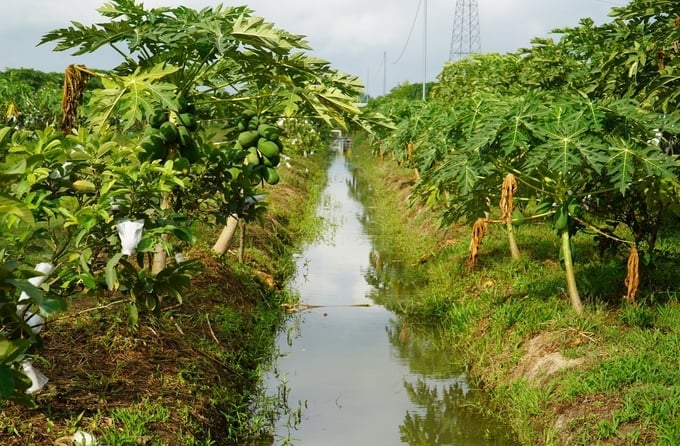
The fruit growing area in Ke Sach district ensures enough water for irrigation during the drought and salty season. Photo: Kim Anh.
Ke Sach district, situated downstream of the Hau River, is renowned as the freshwater hub of Soc Trang province, celebrated for its rice and fruit cultivation. Nonetheless, the district has grappled with two significant saltwater intrusion events since 2015. Notably, during the dry season of 2023-2024, salinity levels in the Nhon My River soared to 6.7‰, while in Ke Sach town, it reached 5.1‰.
The district needs a comprehensive drainage system to shield against salinity from adjacent rivers connected to the Hau River. To mitigate this, embankments are constructed every 30 to 50 hectares to retain freshwater, leaving many agricultural areas vulnerable to dry season repercussions.
In response, in tandem with Soc Trang province's agricultural sector, the local government has proposed numerous strategies to assist communes and towns in the Ke Sach district in combating saltwater intrusion. Community members are actively exploring automatic irrigation techniques, water conservation methods, and preemptive freshwater storage for agricultural activities and daily necessities.
Mr. Nguyen Van Thiet, a Thoi An Hoi commune resident, manages 18 orchards (each covering 1,300 square meters) cultivating fruits such as guava, golden star apple, pink star apple, and papaya.
While previously encountering saltwater incursion only once or twice annually, Mr. Thiet now faces an increased frequency, with the district experiencing three instances of saltwater rise since the beginning of the year. Unfortunately, the existing canal system within the orchard can only retain freshwater for 10 to 15 days.
In response to the challenge, Mr. Thiet invested in an automatic irrigation system. Despite the initial high cost, this investment has proven invaluable, enabling water conservation and reducing fertilizer runoff.
"Each time saltwater intrudes, it significantly damages our fruit trees. The community's greatest hope lies in operating a comprehensive irrigation system. The regulation of water sources effectively prevents saltwater intrusion, bringing immense relief to everyone," shared Mr. Thiet.
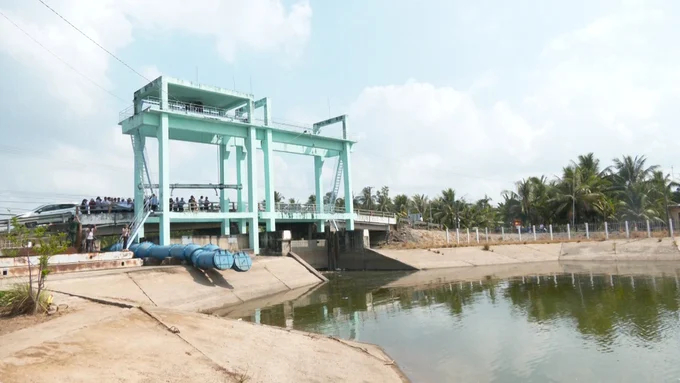
During the peak of salinity drought, the irrigation system helped regulate water sources, prevent salinity, and store fresh water for agricultural production areas. Photo: Kim Anh.
Currently, Soc Trang province has over 600 irrigation sluices. However, many of these projects were established as far back as the 1990s, necessitating regular maintenance and repairs due to aging technology.
The transition from automatic to forced sluice gates has become imperative to accommodate the fluctuating demands for water intake amidst frequent changes in saline boundaries. This upgrade facilitates water regulation and supports water transportation for local inhabitants.
Situated along the southern bank of the Hau River, Long Phu district has recently experienced a notable improvement in livelihoods. Installing the Cai Quanh forced gate has alleviated the arduous task of transporting rice bags across the culvert during the dry season. Even amid droughts and salinity surges, this sluice system remains operational, catering to the navigation needs of rice-purchasing vessels.
The Cai Quanh forced gate project, backed by the Ministry of Agriculture and Rural Development for Soc Trang province, represents a substantial investment exceeding 8 billion VND. Reflecting on the transformative impact since its implementation, farmer Trang Dac Ky in Tan Thanh commune, Long Phu district, recollected the past hardships faced by watercraft navigating the area. Previously, rice producers had to engage laborers to transport rice through the sewer, incurring costs of approximately 200,000 VND per ton.
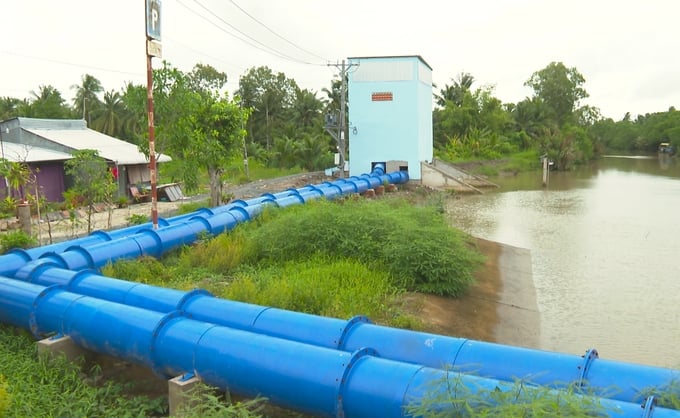
The pumping station system supplies freshwater to localities on the southern bank of the Hau River during the dry season. Photo: Kim Anh.
The operation of the sluice gate depends on the availability of fresh water outside, allowing for safe passage without saltwater intrusion. Currently, the forced gate opens for 45 to 60 minutes when the water levels inside and outside the culvert reach suitable thresholds, ensuring the saltwater does not overflow into the fields while facilitating movement.
The Ba Xam pumping station, positioned directly at the sewer and boasting a capacity of 10,000m3/hour, supplies the region with a substantial volume of freshwater during the dry season.
Venturing into the fields cultivated for the late winter-spring crop in Long Phu and Tran De districts, areas particularly vulnerable to saltwater intrusion, signs of recovery are evident after prolonged exposure to high salinity levels. Marginally affected rice fields have begun to rebound.
Mr. Duong Thanh Tung anticipates harvesting his rice field in Long Phu town within 10 days, expecting a yield of 5 to 5.5 tons of fresh rice per hectare. He notes that his family's late winter-spring rice crop has only experienced a 15-20% reduction in yield, thanks to the area's irrigation system effectively regulating water levels. The impact is now mitigated compared to previous years, where such salinity levels would have resulted in significant losses.

Farmers\' winter-spring rice production in Long Phu district has become more convenient and proactive during the drought and salinity season. Photo: Kim Anh.
The Ninh Quoi lock, situated in Bac Lieu province and funded by the Ministry of Agriculture and Rural Development, has already demonstrated promising results. It safeguards clean rice production areas in My Tu and Thanh Tri districts, as well as parts of Nga Nam town in Soc Trang province.
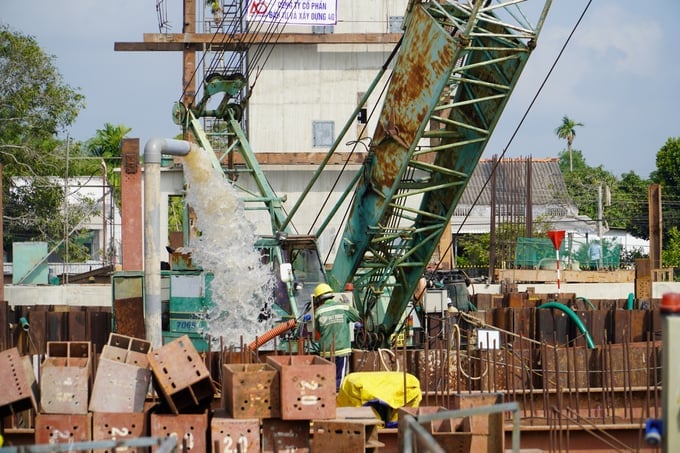
The Rach Mop lock construction unit aims to ensure project progress. Photo: Kim Anh.
The Ministry of Agriculture and Rural Development has recently greenlit a substantial investment in a water source control system along the southern bank of the Hau River, marking the largest-scale project in Soc Trang province to date. This comprehensive system comprises five large sluice gates (Muong Khai 2, Tra Ech, Cai Trung, Cau Truong, and Tra Quyt) alongside the Rach Mop lock.
Of particular note, the Rach Mop lock project, situated on the border between Long Phu and Ke Sach districts, encompasses two sluice compartments, each with a 35-meter door, and one lock compartment with a 15-meter door width, with a total investment cost of approximately 550 billion VND.
Mr. Kieu Van Cong, Deputy Director of the Irrigation Investment and Construction Project Management Board 10, who heads the project executive board, highlighted that significant progress has been achieved with the smooth coordination of localities. Compensation and site clearance have been completed, with construction progress exceeding 65% of the total work volume.
"In the near future, we will collaborate with the Department of Transport of Soc Trang province and the People's Committees of Ke Sach and Long Phu districts to address the water transportation needs of the local populace," Mr. Cong affirmed.
Anticipated to be operational before the dry season of 2024-2025, the Rach Mop lock project will control saltwater intrusion for a direct service area of 19,200 hectares. Simultaneously, it will establish a freshwater source catering to 36,100 hectares of agricultural production in Long Phu, Ke Sach, and Chau Thanh districts, and part of Soc Trang city.
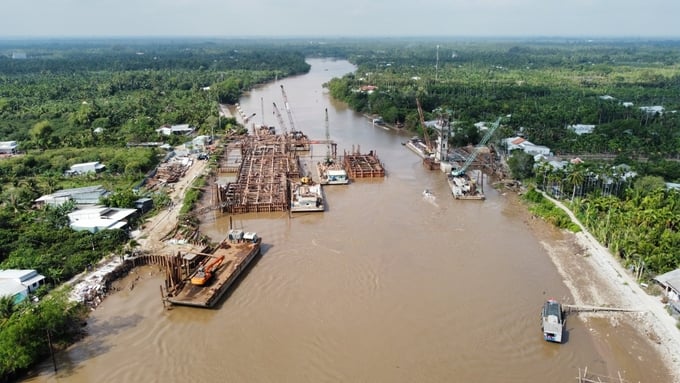
Rach Mop lock will control saltwater for the project's direct service area of 19,200 hectares, creating a source of fresh water for 36,100 hectares of agricultural production in Soc Trang. Photo: Kim Anh.
Once the Rach Mop lock is operational alongside other completed projects, it will effectively manage the entire water source in the Southern Hau River region, heralding a transformation in the fruit and rice production areas of Soc Trang province and generating high anticipation among the local populace.
However, before the project's completion, some locations along the canal banks experienced landslides. To address this issue, Mr. Cong proposed that the Soc Trang province's People's Committee seek a policy from the Ministry of Agriculture and Rural Development to continue constructing protective embankments, ensuring the safety of residents in the area.
With a combination of non-structural and structural solutions and consensus between residents and local authorities, irrigation projects spearheaded by both central and local governments have proven effective. At this juncture, the people of Soc Trang harbor confidence in safeguarding agricultural production.
Translated by Quynh Chi
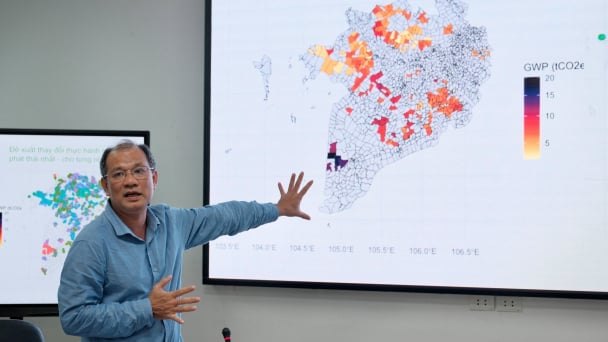
(VAN) Data from 10,000 farming households will help professionalize production organization and support the implementation of the One Million Hectares Program for High-Quality, Low-Emission Rice Cultivation.

(VAN) FAO Director-General QU Dongyu marks International Day of Plant Health at NENA conference.
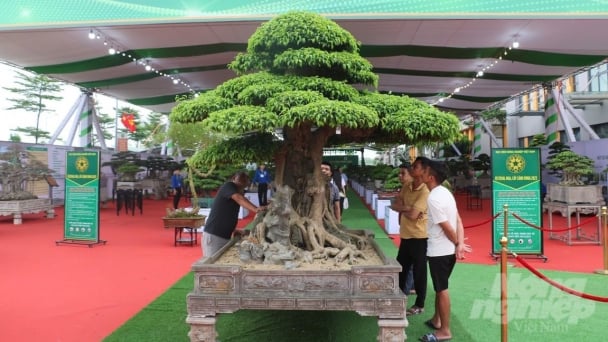
(VAN) Deputy Minister of Agriculture and Environment Hoang Trung affirmed that floriculture and ornamental plants are a growing industry that receives significant global attention.

(VAN) The three staple crops dominating modern diets – corn, rice and wheat – are familiar to Americans. However, fourth place is held by a dark horse: cassava.
/2025/05/10/4037-3-223011_495.jpg)
(VAN) Remote sensing technology is becoming an indispensable tool in monitoring resources, developing modern agriculture, and protecting the environment in Vietnam.
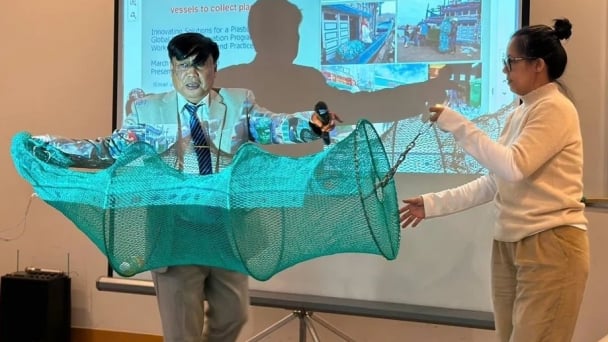
(VAN) The trash bag used on fishing vessels can withstand rough sea conditions, including level 8 to level 10 winds and waves. Notably, it can be hung anywhere on the boat.
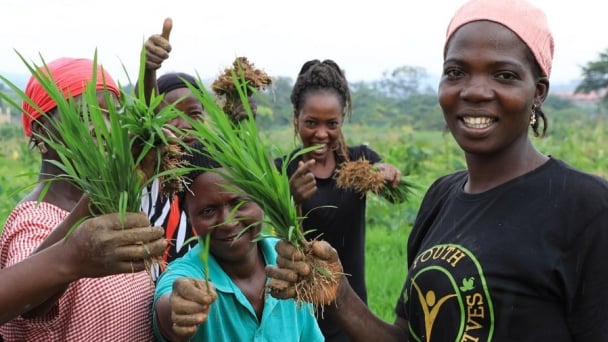
(VAN) African leaders launched the Kampala Declaration on Building Resilient and Sustainable Agrifood Systems in Africa, marking a bold step toward transforming the continent's agriculture.